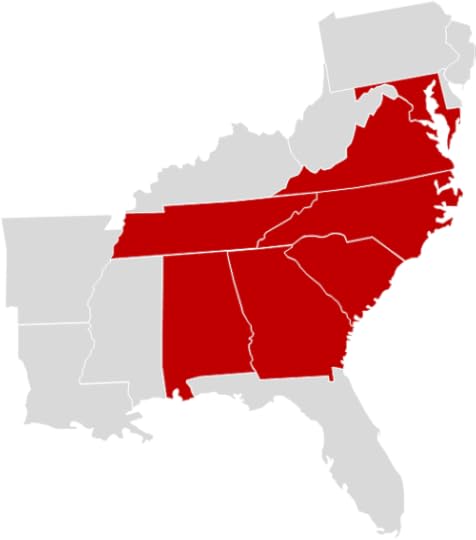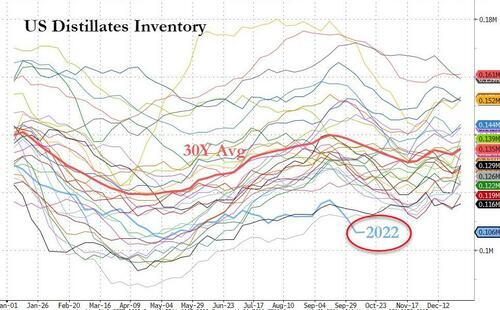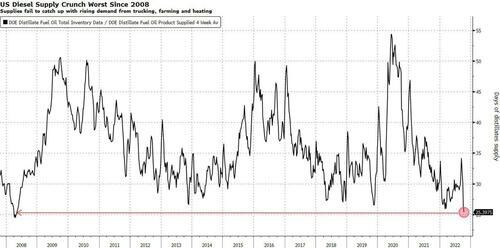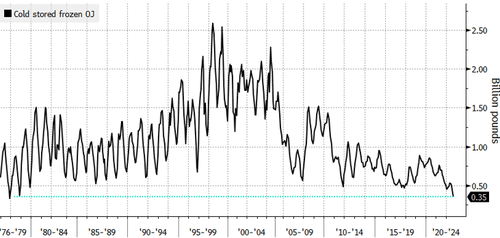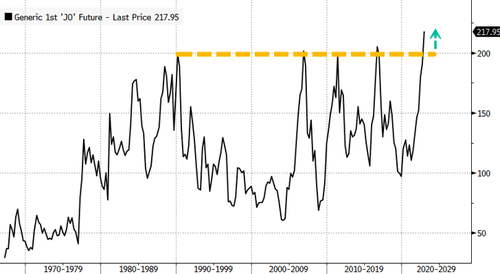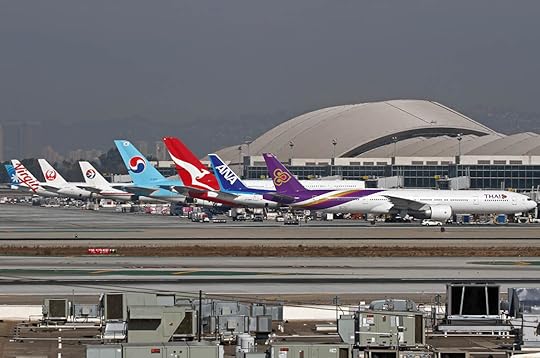Steve Bull's Blog, page 173
October 29, 2022
Getting real: It’s time to crunch the numbers on the transition from fossil fuels
 Analysis: We are used to hearing world leaders talk in blizzards of numbers about targets for cutting greenhouse gas emissions and activists bidding higher, demanding the world move faster to net zero.But has anyone sat down and done the calculations on the physical requirements of completely retooling an industrial system that was built over more than 100 years on coal, oil and gas?Fossil fuel doesn’t just power electricity systems and run cars, it is embedded in the manufacture of steel, cement, plastic and the ammonia used to fertilise the world’s crops.Physicist and former Australian mining engineer associate professor Simon Michaux has spent years looking at the hard data on making this transition. He now works for the Geological Survey of Finland and set out to answer the question: what kinds of minerals and in what quantities will be required to supply the incoming lithium-ion battery factories of Europe?He then expanded his work to look at the size of the task of meeting the stated emissions reduction ambitions of the European Union, China and the United States. Take one example – what will it take to run the estimated global fleet of 1.416 billion vehicles on batteries when right now only 0.51 per cent of it is electric? And an electric car demands seven times the critical minerals of a conventional car.In conversation with Nine News, Professor Michaux says he found there are not enough global mineral reserves to manufacture even the first generation of the planned non-fossil fuel industrial systems.“The nature of the task in front of us – when we actually start looking at the numbers, the reality of what we are looking at – it’s simply not going to go as planned,” Professor Michaux says.
Analysis: We are used to hearing world leaders talk in blizzards of numbers about targets for cutting greenhouse gas emissions and activists bidding higher, demanding the world move faster to net zero.But has anyone sat down and done the calculations on the physical requirements of completely retooling an industrial system that was built over more than 100 years on coal, oil and gas?Fossil fuel doesn’t just power electricity systems and run cars, it is embedded in the manufacture of steel, cement, plastic and the ammonia used to fertilise the world’s crops.Physicist and former Australian mining engineer associate professor Simon Michaux has spent years looking at the hard data on making this transition. He now works for the Geological Survey of Finland and set out to answer the question: what kinds of minerals and in what quantities will be required to supply the incoming lithium-ion battery factories of Europe?He then expanded his work to look at the size of the task of meeting the stated emissions reduction ambitions of the European Union, China and the United States. Take one example – what will it take to run the estimated global fleet of 1.416 billion vehicles on batteries when right now only 0.51 per cent of it is electric? And an electric car demands seven times the critical minerals of a conventional car.In conversation with Nine News, Professor Michaux says he found there are not enough global mineral reserves to manufacture even the first generation of the planned non-fossil fuel industrial systems.“The nature of the task in front of us – when we actually start looking at the numbers, the reality of what we are looking at – it’s simply not going to go as planned,” Professor Michaux says.
October 26, 2022
Major Fuel Supplier On “Code Red” As Diesel Crisis Hits Southeast
Diesel supplies are very scarce across the Northeast and in the Southeast. Supplies are at the lowest seasonal level for this time of year, and the US only has 25 days left of the industrial fuel in storage. The crisis gripping the diesel market appears to be getting out of hand as one fuel supply logistics company initiated emergency protocols this week.
“Because conditions are rapidly devolving and market economics are changing significantly each day, Mansfield is moving to Alert Level 4 to address market volatility. Mansfield is also moving the Southeast to Code Red, requesting 72-hour notice for deliveries when possible to ensure fuel and freight can be secured at economical levels,” Mansfield Energy wrote in an update to customers on Tuesday. The trucking firm has a fleet of tankers that delivers refined fuel products to more than 8,000 customers nationwide.
Mansfield said in many areas on the East Coast, diesel fuel prices are “30-80 cents higher than the posted market average, because supply is tight.”
“At times, carriers are having to visit multiple terminals to find supply, which delays deliveries and strains local trucking capacity,” the notice continued.
This could mean that the US diesel market is so tight that supplies are running very low in certain areas. The crisis has sent supplies of the industrial fuel that power the economy, from trucks to vans to generators to freight trains to tractors, to the lowest level ever for this time of year.
The latest EIA data shows there are only 25 days of diesel supply, the lowest since 2008; and while inventories are record low, the four-week rolling average of distillates supplied – a proxy for demand – rose to its highest seasonal level since 2007.
Mansfield’s is a warning sign that the record low storage levels is beginning to impact fuel supply networks.
…click on the above link to read the rest…
IEA: The Current Energy Crisis Is Unprecedented
“The world is in the middle of the first truly global energy crisis,” the executive director of the International Energy Agency, Fatih Birol, said today in Singapore.
The official went on to warn that natural gas and LNG markets would tighten further in 2023, with only 20 million tons of new liquefaction capacity scheduled to come online in that year, Reuters reported.
Speaking at the Singapore International Energy Week, the head of the IEA also said that while supply remains tight, demand for gas will continue to be strong, especially in Europe and possibly in China.
Birol’s warning comes amid expectations that this winter will not be the toughest for Europe. Next winter is believed to be potentially much worse because, during the first half of this year, the EU could stock up on Russian pipeline gas, which is unlikely to come back next year, leaving the EU with a supply gap that other suppliers would be hard-pressed to fill.
Meanwhile, as many as 60 LNG tankers have turned into floating storage off European coasts as there is not enough regasification capacity on the continent to unload the cargo.
This, CNBC reports, is delaying some of the tankers’ return to the Gulf Coast to reload, and pushes gas inventories higher, Andrew Lipow from Lipow Oil Associates told the network.
…click on the above link to read the rest…
Most productive NSW agricultural shire counts hundreds of millions of dollars in crop losses
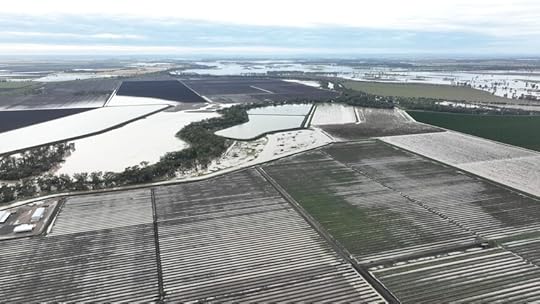 Crops on the verge of harvest have been wiped out.(Supplied: Rabbit Hop Films)
Crops on the verge of harvest have been wiped out.(Supplied: Rabbit Hop Films)New South Wales’s peak farming body says the damage bill for wheat losses alone in the state’s flood-hit north-west will surpass $150 million.
Key points:Fourth-worst flood in Moree’s recorded history wipes out wheatNSW Farmers’ group estimates 120,000 hectares of wheat lost around Moree, totalling about $150 millionThe lobby group is calling for urgent financial assistanceParts of Moree, Gunnedah, Dubbo and Moama have been evacuated as more than 140 flood warnings remain across the state.
Agronomists say the grain-growing hub of the north-west is expected to have “conservatively” lost more than 120,000 hectares of wheat that was nearly ready to harvest.
The region also boasts large barley and canola outputs and is in the summer planting window for crops such as cotton and sorghum.
Look back on our blog for the latest news on flooding in Victoria, New South Wales and Tasmania
The NSW Farmers Association is calling on the federal government to bolster flood support payments in Labor’s first budget in this term of government.
The lobby group’s Grains Committee chair, Justin Everitt said the dollar value of the wheat damage is on top of approximately $42 million farmers spent to grow the crop, in a year where input costs have been extraordinarily high.
He said crops are “now drowning beneath floodwater” and may be a “complete write-off” if paddocks don’t dry out soon.
“You spend all this money preparing your paddocks, sowing your crops, fertilising and spraying them, only to see them wiped out a couple weeks before harvest. It’s heartbreaking,” Mr Everitt said.
“Farmers know they’re taking a bit of a gamble when they’re planting a crop, but this ongoing wet weather with flood after flood after flood is just unbelievable.”
…click on the above link to read the rest…
The ‘War of Terror’ may be about to hit Europe
Never underestimate a wounded and decaying Empire collapsing in real time.
Imperial functionaries, even in a “diplomatic” capacity, continue to brazenly declare that their exceptionalist control over the world is mandatory.
If that’s not the case, competitors may emerge and steal the limelight – monopolized by US oligarchies. That, of course, is absolute anathema.
The imperial modus operandi against geopolitical and geoeconomic competitors remains the same: avalanche of sanctions, embargos, economic blockades, protectionist measures, cancel culture, military uptick in neighboring nations, and assorted threats. But most of all, warmongering rhetoric – currently elevated to fever pitch.
The hegemon may be “transparent” at least in this domain because it still controls a massive international network of institutions, financial bodies, politicos, CEOs, propaganda agencies and the pop culture industry. Hence this supposed invulnerability breeding insolence.
Panic in the “garden”
The blowing up of Nord Stream (NS) and Nord Stream 2 (NS2) – everybody knows who did it, but the suspect cannot be named – took to the next level the two-pronged imperial project of cutting off cheap Russian energy from Europe and destroying the German economy.
From the imperial perspective, the ideal subplot is the emergence of a US-controlled Intermarium – from the Baltic and the Adriatic to the Black Sea – led by Poland, exercising some sort of new hegemony in Europe, on the heels of the Three Seas Initiative.
But as it stands, that remains a wet dream.
On the dodgy “investigation” of what really happened to NS and NS2, Sweden was cast as The Cleaner, as if this was a sequel of Quentin Tarantino’s crime thriller Pulp Fiction.
That’s why the results of the “investigation” cannot be shared with Russia. The Cleaner was there to erase any incriminating evidence.
…click on the above link to read the rest…
October 25, 2022
Saudis Sought Oil Production Cut So Deep It Surprised Even Russia
OPEC+ slashed oil production following a Saudi pressure campaign that experts say aims to hurt Democrats in the midterms.
THE SAUDI-LED oil cartel OPEC+’s announcement earlier this month that it was cutting 2 million barrels of oil per day — a move that would drive up the price of oil just a month before midterm elections — rankled Democrats in Washington. They accused Riyadh of aligning itself with Russia, another powerful member of OPEC+, which would indeed profit off the move. “What Saudi Arabia did to help Putin continue to wage his despicable, vicious war against Ukraine will long be remembered by Americans,” said Senate Majority Leader Chuck Schumer.
But Saudi Arabia actually pushed to cut oil production twice as much as Russian President Vladimir Putin, surprising the Russians, two Saudi sources with knowledge of the negotiations told The Intercept, suggesting that Riyadh’s motives run deeper than what top Democrats want to admit. The sources requested anonymity, fearing reprisal by the Saudi government.
Public reporting has hinted at Saudi’s Arabia’s drive for a far more aggressive production cut than Russia as well as other OPEC+ members first sought. On September 27, Reuters reported that Russia favored a 1 million barrel per day cut — just half of what would later be agreed upon. Then on October 5, OPEC+ announced that it would be cutting 2 million barrels a day. On October 14, the White House’s National Security Council spokesperson John Kirby said that “more than one” OPEC+ members disagreed about the cut but were coerced by Saudi Arabia into going along with it — but he declined to specify which countries. The OPEC+ members who privately pushed back against the cut include Kuwait, Iraq, Bahrain, and even the United Arab Emirates, a close ally of Saudi Arabia’s, according to the Wall Street Journal. These countries reportedly feared that the production cuts could lead to a recession that would ultimately reduce demand for oil.
Saudi Arabia, a putative ally, pushed for even deeper cuts than what Russia, a U.S. adversary, even believed they could get away with, the sources said. “People in D.C. think MBS is siding with Putin, but I think MBS is even more Putinian than Putin,” one of the sources, a Saudi close to the royal family, said, referring to Saudi Arabia’s de facto ruler, Crown Prince Mohammed bin Salman.
While Saudi Arabia has maintained that the move was motivated solely by economic interests, the White House and other top Democrats have said that the Saudis are pursuing a conscious alignment with Russia. “The Saudi foreign ministry can try to spin or deflect, but the facts are simple,” Kirby said, alleging that “they knew” that the oil production cut would “increase Russian revenues and blunt the effectiveness of sanctions” against Russia amid its invasion of Ukraine.
…click on the above link to read the rest…
Farm grade diesel shortage could threaten new crops
DOVER, Fla. — A tax-free diesel fuel shortage for farmers in Central Florida is threatening crops and could send prices for agriculture commodities skyrocketing by early next year.
Farmers are reporting a shortage of diesel fuel from suppliers at the port, which is leading them to fuel up at local pumps in competition with the general public, and paying full price per gallon of fuel.
What You Need To KnowDiesel fuel shortage for farmers in Central Florida could threaten cropsFarmers are reporting a shortage of diesel fuel from suppliers at the portDiesel fuel is heavily used by farmers to help power water pump houses to water crops“Every time our fuel supplier goes to the port they are being told that the allocations aren’t there for them,” said Matt Parke with Parkesdale Farms in Dover. “So we are really having to go to different gas stations to get regular road diesel out here.”Diesel fuel is heavily used by farmers to help power water pump houses that get water onto newly planted crops.
Without diesel fuel, Parke says new crops could be at risk.
“If they run short and we are in the middle of trying to live these plants in, you know, they are going to die,” said Parke. “And we will have 50 to 80 percent loss.”
Standing next to a bagged diesel pump, Bennett Station owner Darwish Elhajji says he’s seeing the struggle over the fuel shortage daily.
Bennett Station is a bulk supplier for the kind tax-free diesel farmers in Plant City use for everything from water pump houses to tractors and other field equipment.
“Any negative effect to the crop in this city will affect everyone, it will be a trickle down,” Elahjji said.
…click on the above link to read the rest…
German Energy Apocalypse Update VII
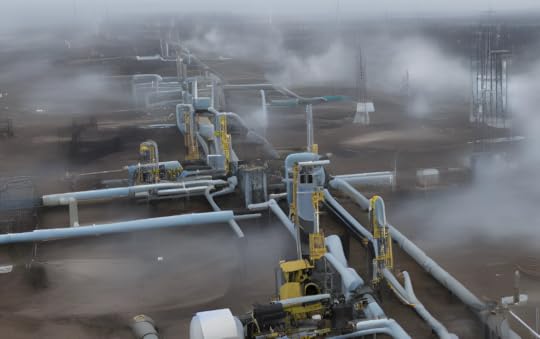
The only published footage of the damage to the Nord Stream pipelines, featured on my Nord Stream Conspiracy Thread, turns out to come from Expressen, a Swedish newspaper. Their reporters hired undersea drone operators and took a boat out to the site of the explosions off the island of Bornholm. There, they found a sizeable crater and 50 metres of missing pipeline. That this is how the images should have made their way to us, rather than through any official path, speaks volumes about the eagerness of Swedish authorities to suppress this story.
Protests against the insane energy policy of the German government are gathering momentum, particularly in the East; sporadic reports are even appearing in major media outlets now. This is surely one reason that the Minister President of Saxony, Michael Kretschmer, continues to stray from official CDU talking points, calling for negotiated peace in Ukraine and likening EU sanctions to a “tsunami” threatening the German economy.
Feared gas shortages are causing chaos as customers rush to change suppliers in search of better prices, or because their current contracts have been cancelled. Several municipal utilities have flatly stopped accepting new customers, but this option is not available to the so-called Grundversorger or “basic suppliers”—the utilities that supply the majority of gas in their region. These are legally bound to take all comers, and many of them are already having difficulty meeting sudden surges in demand.
Their day-to-day solvency may also soon be a problem:
[I]t is not only the procurement prices that have risen sharply, but also the interim financing costs—that is, the sum with which the municipal utilities must bridge the time from the purchase of gas to the onward sale to the customer, and to the increase in customers’ instalment payments, [an Association of Municipal Enterprises] spokesman explained…
…click on the above link to read the rest…
Orange Juice Prices Soar To Record Highs As Inventories Collapse
We recently outlined “Orange Juice Prices Could “Increase Substantially” As Hurricane Pummels Florida’s Top Citrus Grow Region.” And that’s precisely what’s happening today.
First, let’s begin with US stockpiles of cold-stored orange juice plunged by 43% in September from a year earlier — the lowest level since 1977, according to the latest US Department of Agriculture data.
A combination of crop diseases across Florida’s citrus groves and Hurricane Ian that destroyed crops are creating a supply crunch that has catapulted orange juice futures contracts to as high as $2.18 per pound, the highest level ever.
Ahead of Hurricane Ian, we penned a note titled “OJ Squeeze Ahead? Tropical Threat Looms For Florida’s Citrus Groves” and warned this may spark even higher breakfast inflation. Last month, we noted that a dozen eggs at the supermarket have jumped to record highs due to devastating bird flu.
Sticky food inflation continues to wreak havoc on households, as shown in the latest CPI report.
Breakfast was cheap but has since become expensive as orange juice and egg prices soar to record highs.
October 24, 2022
Dreaming of clean green flying machines
In common with many other corporate lobby groups, the International Air Transport Association publicly proclaims their commitment to achieving net-zero carbon emissions by 2050.1
Yet the evidence that such an achievement is likely, or even possible, is thin … to put it charitably. Unless, that is, major airlines simply shut down.
As a 2021 Nova documentary put it, aviation “is the high-hanging fruit – one of the hardest climate challenges of all.”2 That difficulty is due to the very essence of the airline business.
What has made aviation so attractive to the relatively affluent people who buy most tickets is that commercial flights maintain great speed over long distances. Aviation would have little appeal if airplanes were no faster than other means of transportation, or if they could be used only for relatively short distances. These characteristics come with rigorous energy demands.
A basic challenge for high-speed transportation – whether that’s pedaling a bike fast, powering a car fast, or propelling an airplane fast – is that the resistance from the air goes up with speed, not linearly but exponentially. As speed doubles, air resistance quadruples; as speed triples, air resistance increases by a factor of nine; and so forth.
That is one fundamental reason why no high-speed means of transportation came into use until the fossil fuel era. The physics of wind resistance become particularly important when a vehicle accelerates up to several hundred kilometers per hour or more.
Contemporary long-haul aircraft accommodate the physics in part by flying at “cruising altitude” – typically about 10,000 meters above sea level. At that elevation the atmosphere is thin enough to cause significantly less friction, while still rich enough in oxygen for combustion of the fuel. Climbing to that altitude, of course, means first fighting gravity to lift a huge machine and its passengers a very long way off the ground.
…click on the above link to read the rest…

